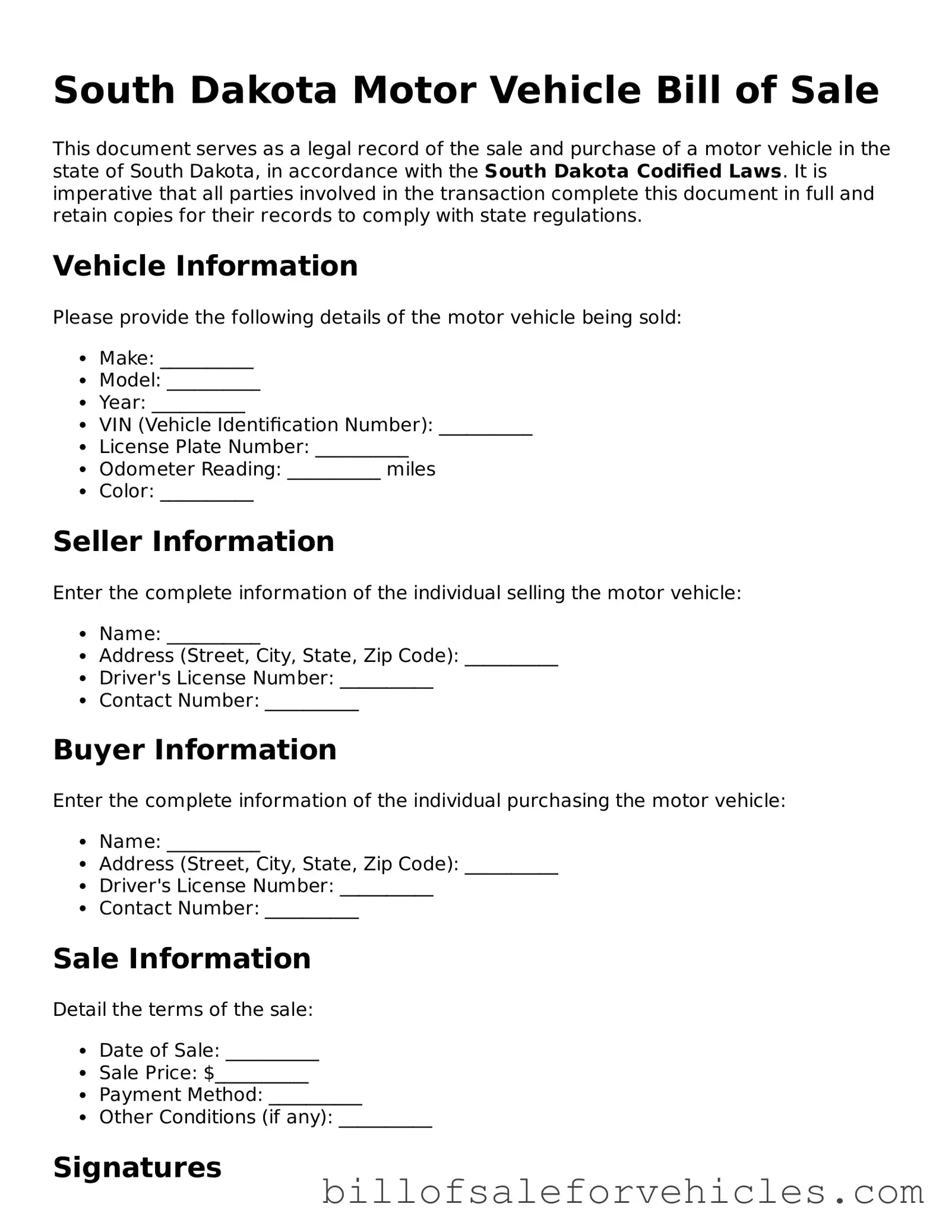What is a South Dakota Motor Vehicle Bill of Sale form?
A South Dakota Motor Vehicle Bill of Sale form is a legal document that records the sale of a vehicle from one party (the seller) to another (the buyer) in the state of South Dakota. This document provides proof of the transaction, specifying details like the vehicle description, purchase price, and the parties involved. It plays a crucial role in transferring the title of the vehicle from the seller to the buyer.
Why is it necessary to have a Motor Vehicle Bill of Sale in South Dakota?
In South Dakota, a Motor Vehicle Bill of Sale is necessary for a few reasons. Firstly, it serves as a legal record of the sale, which can help in protecting both the buyer and the seller in case of disputes. Secondly, it is often required by the Department of Motor Vehicles (DMV) for the registration and titling of the vehicle. This document ensures that the ownership is properly transferred and can also be used for tax purposes.
What information should be included in a South Dakota Motor Vehicle Bill of Sale form?
A comprehensive South Dakota Motor Vehicle Bill of Sale form should include the following information: the date of the sale, the names and addresses of the seller and the buyer, the vehicle's make, model, year, and Vehicle Identification Number (VIN), the purchase price, and the signatures of both parties involved. Including the odometer reading at the time of sale is also recommended, as it provides further verification of the vehicle's condition.
Do I need to notarize the South Dakota Motor Vehicle Bill of Sale?
While notarization of the Motor Vehicle Bill of Sale is not a compulsory requirement in South Dakota, it is highly recommended. Having a notary public witness the signing process adds a level of legal authentication, making the document more credible in case its validity is questioned in legal scenarios. It can also offer an additional layer of protection against potential fraud.
Can I use a generic Motor Vehicle Bill of Sale form for a transaction in South Dakota?
Yes, you can use a generic Motor Vehicle Bill of Sale form for transactions in South Dakota, as long as it contains all the necessary information required by state law. However, it is advisable to use a form that is specifically designed for South Dakota or to verify that the generic form meets all local legal requirements. This ensures that the process of registration and titling goes smoothly without any issues.
How do I file a Motor Vehicle Bill of Sale in South Dakota?
To file a Motor Vehicle Bill of Sale in South Dakota, the completed form should be submitted to the local DMV office as part of the vehicle registration and titling process. The buyer will need to present this form along with other required documents, such as proof of insurance and the vehicle title. It's important to check with the specific DMV office for any additional requirements, as these can vary by location.
